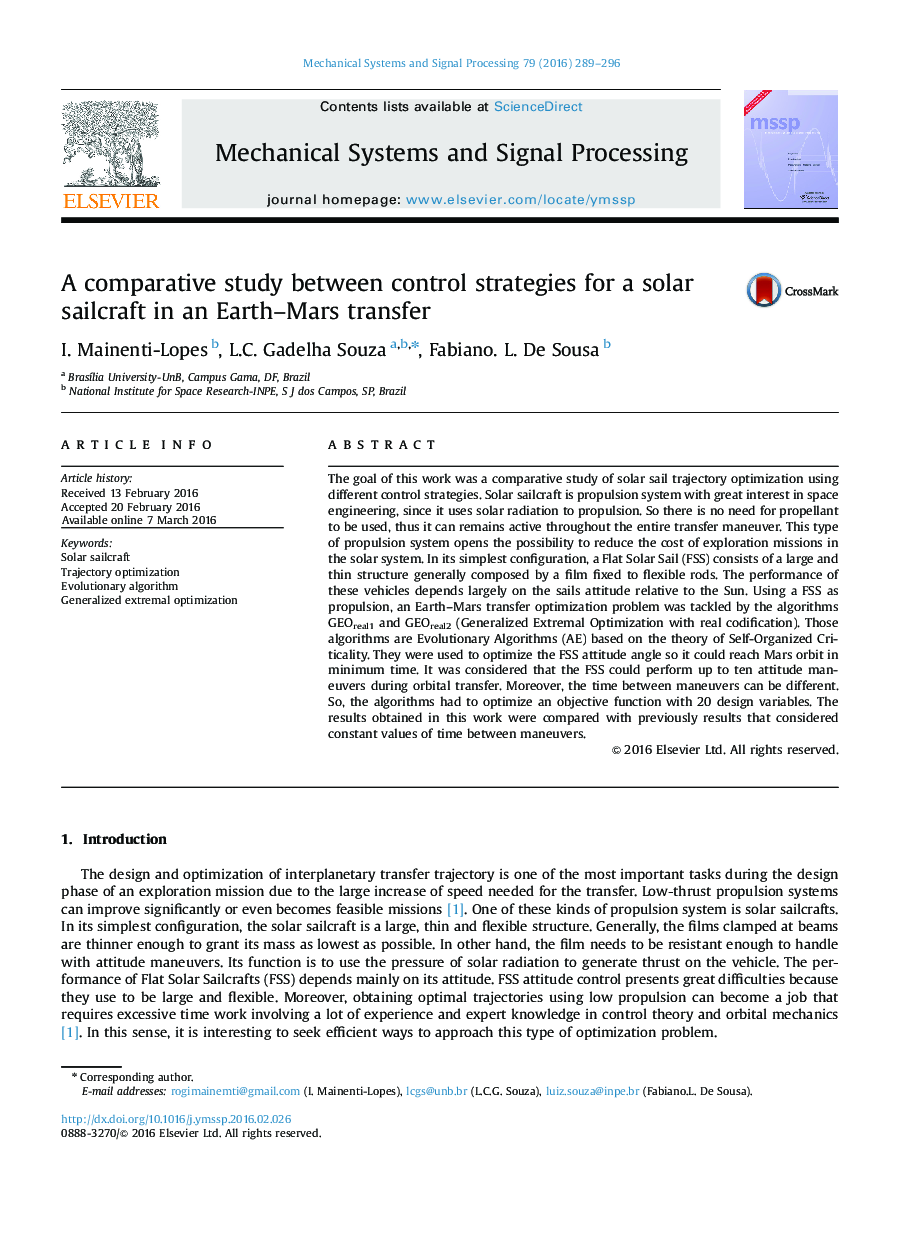| Article ID | Journal | Published Year | Pages | File Type |
|---|---|---|---|---|
| 559057 | Mechanical Systems and Signal Processing | 2016 | 8 Pages |
The goal of this work was a comparative study of solar sail trajectory optimization using different control strategies. Solar sailcraft is propulsion system with great interest in space engineering, since it uses solar radiation to propulsion. So there is no need for propellant to be used, thus it can remains active throughout the entire transfer maneuver. This type of propulsion system opens the possibility to reduce the cost of exploration missions in the solar system. In its simplest configuration, a Flat Solar Sail (FSS) consists of a large and thin structure generally composed by a film fixed to flexible rods. The performance of these vehicles depends largely on the sails attitude relative to the Sun. Using a FSS as propulsion, an Earth–Mars transfer optimization problem was tackled by the algorithms GEOreal1 and GEOreal2 (Generalized Extremal Optimization with real codification). Those algorithms are Evolutionary Algorithms (AE) based on the theory of Self-Organized Criticality. They were used to optimize the FSS attitude angle so it could reach Mars orbit in minimum time. It was considered that the FSS could perform up to ten attitude maneuvers during orbital transfer. Moreover, the time between maneuvers can be different. So, the algorithms had to optimize an objective function with 20 design variables. The results obtained in this work were compared with previously results that considered constant values of time between maneuvers.
